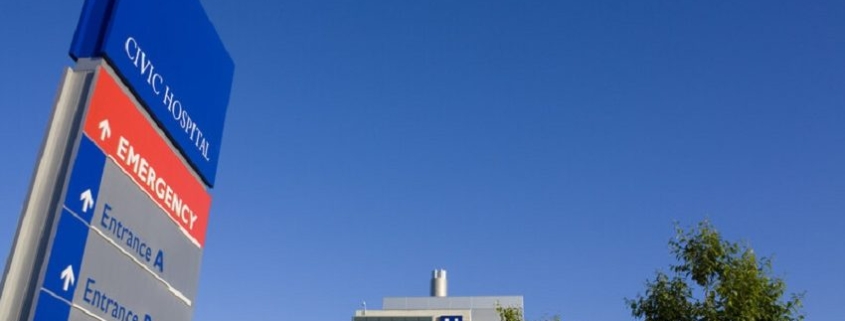While there is no question the demand outlook looks robust, the supply side of the equation remains a rough one for many property types.
Does that make many healthcare REITs uninvestable? No, but it could never justify pulling the trigger at current valuations.
When it comes to medical office buildings, however, there is a defensible moat here on an operational level and just as many, if not more, of the trends in healthcare benefit the industry. As the largest and most pure play on these assets, Healthcare Trust of America (HTA) trades at a clear discount to its intrinsic value. While not a home run type of purchase today, hitting singles and doubles never hurt anyone.
Overview of Healthcare, Medical Office Building Outlook
Everyone knows the bull thesis for healthcare. The Office of the Actuary for the Centers for Medicare and Medicaid Services (“CMS”) recently projected that national health spending will rise 5.5% annually from 2018 to 2027. That means that, once again, healthcare spend will outstrip likely GDP growth for the next ten years. Within the “buckets” of healthcare spend, no matter the category (hospital care, physicians, prescription drugs, nursing) cost inflation is on the rise.
Part of that is economic (inflation, higher wages, more demand) and part of that is demographic (Baby Boomers). No question that healthcare is and will be one of the fastest growing areas of the market. Who or what captures the economic value from that growth has profound implications across the industry, real estate included.
Investors will not find a healthcare REIT not citing rising spend and aging demographics as a bull catalyst. However, there is criticism of the supply side of the equation in recent years, including bearish calls on plays like New Senior (SNR), Ventas (VTR), or some skilled/assisted nursing home operators themselves like Senior Care Centers. Depending on the asset type, there is often very few barriers to entry – particularly in the senior housing whether it be skilled nursing or assisted living. As much as the industry tries to talk about “viable infill” opportunities in certain markets, even strong locales eventually reach operational parity as competition moves in. Bad markets just cannot be fixed.
Medical office buildings (“MOBs”) are an exception. Unlike other areas of the healthcare real estate market, there are actual barriers to entry. Location matters. On-campus and near-site off campus buildings within high demand medical areas have seen immense value growth. Cap rates have contracted by 400bps since the Great Recession and steadily improved even in recent years which is slightly unusual. All else equal, that implies a 70% increase of property values even on flat net operating income (“NOI”). In actuality, comps have been healthy (low to mid single digits) which has created riches for owners which often has been the hospitals and health systems themselves.
These assets also benefit from a litany of trends in the American healthcare system, the most important of these is the increasing move towards outpatient services. Readers already know procedures are just nutty expensive nowadays. The only way for service providers to somewhat constrain costs is by reducing patient time spent under medical care. Avoiding an overnight hospital stay can save thousands of dollars per patient, often without any change in complication or readmission rates. Insurers are more than willing to allow hospitals to capture higher incremental profits to encourage outpatient work. MOBs, by their nature, rent to tenants providing these kinds of procedures.
As the entire healthcare industry continues to consolidate, health systems will inevitably target expansion within the core areas of their network. Heavy capital investment and infrastructure build-out leads to adjacent MOBs seeing growth. Hospitals, who still remain the majority owners of MOBs, are also highly incentivized to sell. Whenever a hospital is the landlord and rents space to physicians, they run greater risk of violating the Anti-Kickback Statute which bans any type of payment for referrals. Selling to a REIT like Healthcare Trust of America frees up capital while also avoiding any potential allegations of favorable rent treatment.
Healthcare Trust of America
MOBs are the Healthcare Trust of America bread and butter. Nearly the entire portfolio (94% of gross leasable area) is in this type of asset. The company owns 23.2mm square feet, making it the largest publicly-traded pure play in this space. Assets owned are primarily located in major metropolitan markets like Dallas, Houston, Atlanta, and Boston. This has taken quite a bit of hard work and time. Operating a bit under the radar, management has been high-grading the locations of its assets over the past five years. Acquisitions have leaned towards more dense urban areas and there has been some decent efforts made in cutting underperforming properties, including $300mm worth of dispositions last year alone.
While major healthcare REIT players like Welltower (WELL) and Ventas (VTR) have significant MOB portfolios, it isn’t their primary business. On a comparable basis, Healthcare Trust of America has spent more acquiring and developing in this space than anyone else. It shows through the results. Funds from operations (“FFO”) per share has grown at a 5.2% clip since 2014, outstripping the peer group significantly which has struggled to see any material change. The largest contributor to that has been same store sales growth which has run well above average.
Management is very efficient with its capital spend, runs a solid investment grade balance sheet with lower than average leverage, and has still managed to outgrow comps. No wonder shareholder returns have eclipsed other healthcare players as well – and I’d argue that as far as the stock price goes it should have done better.
CEO Scott Peters believes the business can generate substantially similar FFO growth going forward to the rates it has earned in the past. Contributing factors to that remain the same: low single digit same store revenue growth, marginal annual expense savings, and a touch of occupancy rate improvement. The expense growth target an admirable one in particular. Unlike many other REITs in this sector, same store expenses has actually shrunk over the past few years as the portfolio has grown, something most REITs do not accomplish. Tie the cost focus together with acquisition and development and management believes that execution can deliver 8-12% annual shareholder return potential even assuming no multiple contraction over the medium term. This does not rely on further cap rate compression which could also boost the market’s outlook.
Takeaways
Is the dividend exciting? No, 4.5% isn’t anything to write home about. Is this a deep value opportunity or something that might make you rich overnight? No, this is not one of my usual deep value contrarian plays. Is it an investment grade player with long term contracted cash flows, making a dividend cut is incredibly remote? That it is. Using my usual REIT framework, does it trade at a discount to net asset value (“NAV”)? Arguably, yes. With projected $450mm in 2019 NOI and valuing the business at a conservative 5% cap rate, there is about 15% upside to reach NAV.
Not every investment needs to have 30, 50, or 100% projected upside to make sense. This one just works. Investors have seen quite a lot of dividend cuts over the past year.
Source: Seeking Alpha





